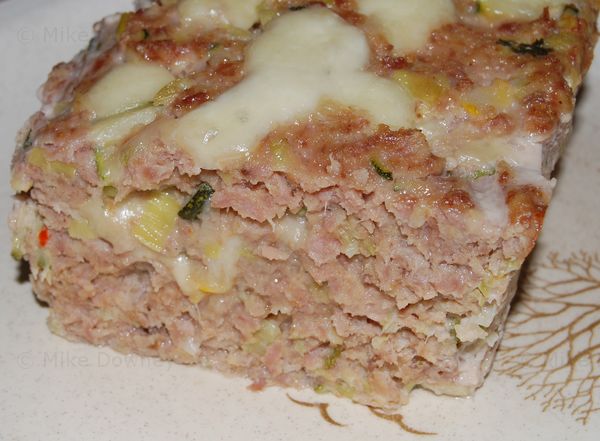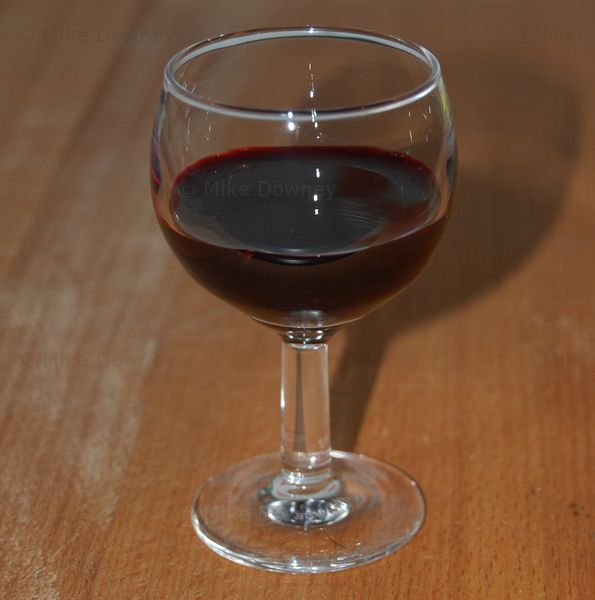This is the first in a short series of science-related posts where I will be explaining a bit of science behind some things which are of particular interest or relevence to me. I will be starting with fermentation since it is important in both baking and wine- and beer-making.
Types of Yeast
I apologise in advance for the use of the scientific names for the yeast but I need to be precise about which types of yeast I am talking about.
There are over 1,500 different types of yeast but the one which most people will be familiar with is called Saccharomyces cerevisiae, which is the classic bakers or brewers yeast. This has been used for centuries for this purpose. This is known as a 'top fermenting' yeast since, when making beer or wine, the live yeast forms a thick layer on top of the liquid.
Another yeast used in fermentation is Saccharomyces pastorianus (sometimes called S. carlsbergensis). This is a hybrid between S. cerevisiae and a naturally occurring yeast, S. eubayanus, which has been recently isolated from populations in South America.
A third type of yeast is called Schizosaccharomyces pombe. It gets its name from the Swahili word for beer and was isolated from strains used in East Africa to brew beer from millet. Along with S. cerevisiae it is used in research as a 'model organism' to investigate things such as signalling or communication between cells.
Yeast Metabolism
Yeast are typically most efficient when using simple sugars as a food. The common everyday sugar (known as sucrose) is a 'disaccharide' which means it is composed of two simpler sugar molecules (called monosaccharides) joined together.
In the presence of oxygen, the yeast grow and multiply rapidly which leads to the rapidly forming froth on top of fermenting liquids. After the oxygen has been used up, the yeast can then get on with their primary job which is fermentation:
Glucose → 2 molecules of ethanol and 2 molecules of Carbon dioxide. In brewing it is the ethanol we want, whereas in baking it is the carbon dioxide which is needed to make bread rise (Of course if you are making champagne, cider or any other 'fizzy' drink, you also want some of the carbon dioxide too).
Another way of writing this is:
C6H12O6 → 2C2H6O + 2 CO2
Brewing yeast can normally only directly consume the simpler monosaccharides so sucrose needs to be broken down in a process called 'Inverting' (this is what the 'Inverted Sugar Syrup' means on ingredient lists on manufactured foods).
Sucrose + Water → Glucose + Fructose
The above reaction is known as hydrolysis because it involves adding water to chemically change something. It can be done by boiling a sugar syrup with citric acid, which is a technique sometimes used to speed up brewing (at least in some homebrew circles).
As a chemical reaction, this can be written as:
C12H22O11 + H2O → C6H12O6 + C6H12O6
The two C6H12O6 on the right hand side look the same but they are actually Glucose and Fructose. They contain the same atoms but arranged differently.

(Based on images from Wikipedia)
The yeast do not actually do this themselves but they produce an enzyme called Invertase which they release into their surroundings, where this reaction actually takes place.
Coming Soon
Future posts will cover such subjects as Astronomy, Chemistry and Biology in various combinations. Feel free to leave any comments, including requests for future articles.
Turkey and Vegetable Meatloaf |
Story location: Home / food_and_drink / |
| 29/Sep/2011 |
The meatloaf recipe is similar to our normal burger recipe but baked in a tin instead of being fried in a pan.
Ingredients
All quantities are approximate.
- 400g or so of turkey mince
- 1 medium leek
- ½ courgette
- 2 cloves of garlic
- 1 chilli pepper
- plain flour
- 1 egg
- a couple of handfuls of breadcrumbs
- 100g mozzarella or other cheese
- salt and pepper or other seasoning as preferred.

Start by finely chopping the vegetables frying in a little oil until they soften. Stir in a couple of tablespoons of flour then leave to cool before mixing the vegetables with the mince.
Add the seasoning, breadcrumbs and egg and mix well. Put half of the mix into a loaf tin then layer half of the cheese. Cover with the remaining mix. Cover with foil and bake for about 1 hour at gas mark 6. Remove the foil and cover with the remaining cheese before returning to the oven for about 10 minutes to melt the cheese.

Roast Tomato Soup |
Story location: Home / food_and_drink / |
| 26/Sep/2011 |
Our fridge is starting to fill up with tomatoes from the garden, I seem to be harvesting them much faster than I can eat them. Emma suggested making a tomato soup and pointed me towards the Red Onion & Roasted Cherry Tomato Soup recipe in the Covent Garden Soup & Beyond book.
I have had to slightly adapt the recipe, leaving out the onions and using a tube of pureéd basil instead of fresh basil leaves, as well as roughly halving the ingredients to make it serve 2.
Place the following in a roasting pan and put in the oven at gas mark 5 for about 50 minutes, until the tomato skins start to brown slightly.
- 1.5lb tomatoes from the garden
- Sprinkle of salt
- 2 cloves of garlic
- a generous drizzle of olive oil.
Leave the tomatoes to cool for a few minutes then liquidize and pour into a pan. Add 1tsp of balsamic vinegar and 1 heaped tsp of dark brown sugar. Bring to a simmer, add the basil and some water to make it a decent soupy consistency.
Our tomatoes can be a bit bland and watery so I didn't add the full 150ml of water (I actually used slightly more than the 1.5lb of tomatoes since I picked more this morning and I added any where the skins had split). I made the soup in advance and let it stand for a few hours to let the flavours mix together properly.
Some photos from my trip into Cardiff today. We were at the Hamster Show which was held in neaby Radyr (congratulations to our Winter White hamsters who won the Dwarf Hamster categories apart from Best In Show).
This was my first time in the city and I was impressed by the place. Cardiff Bay seemed to be one continuous collection of cafes, bars and restaurants. The city centre itself was ok but I didn't have time for a thorough explore. It rained quite a lot while I was there so I had to be a bit selective with my photos and avoid too much washed out sky.









Click on the thumbnail to view the image
We went to nearby Baginton for this years Heritage Open Day. Within a short distance there were several sites, including the Electric Train Museum and Bagot's Castle, neither of which are normally open to the public. We also visited Airbase, where they had a selection of vintage aircraft on display.








Click on the thumbnail to view the image
Elderberry Syrup |
Story location: Home / Blog / food_and_drink / |
| 07/Sep/2011 |

Last week I picked some elderberries but I only managed to get one small tub of them. I thought I would have a go at making elderberry syrup since it is supposed to be a good source of vitamin C. I read a few recipes but didn't follow any of them exactly.
I removed all the stalks and put the berries in a pan along with a small splash of water. I simmered the berries and pressed them against the side of the pan to release the juices. I strained the juice into a jug before putting the berries back in the pan with a bit more water for a 2nd extraction.
To make the syrup, I put the juice in a pan with a splash of lemon juice and a generous sprinkle of sugar. I simmered the juice for a few minutes to dissolve the sugar. When it had cooled, I poured it into a bottle and stored it in the fridge.
The first time I tasted the syrup it was still slightly warm and tasted quite sweet but later on when I sampled it again it had gone nice and cold and had a nice strong 'berry' flavour with no obvious sweetness.
Black Country Living Museum |
Story location: Home / Blog / birmingham / |
| 03/Sep/2011 |
We continued yesterday's theme of visiting somewhere new, this time we drove west to the Black Country Living Museum. This is similar to Blists Hill at Ironbridge with a similar range of displays and shops.















Click on the thumbnail to view the image
We decided to visit a few new places today and chose to head out east along the A14 towards Northamptonshire. We looked at the map in the English Heritage handbook and the Rushton Triangular Lodge looked interesting. The hunting lodge was quite small and only took a couple of minutes to look around.
Emma wanted to stop somewhere for an ice cream so we got our phones out and looked up locations of country parks. Emma found the East Carlton Country Park, so we headed there next. We walked along a marked path with sculptures scattered along its length. On the way home we drove past the Naseby battlefield and stopped at a viewpoint and the monument.





Click on the thumbnail to view the image
